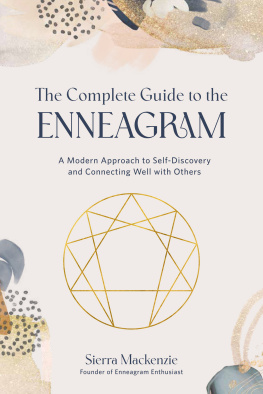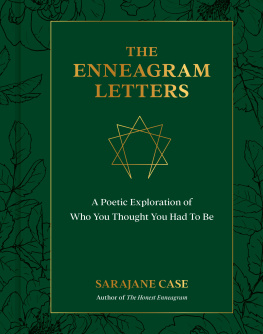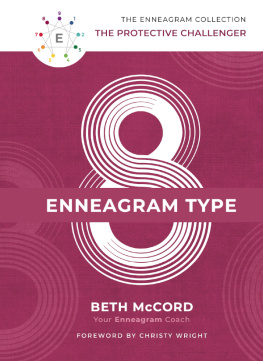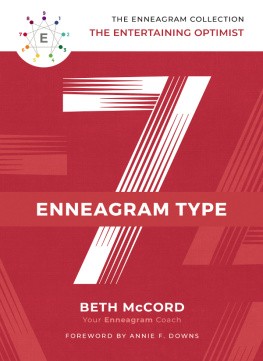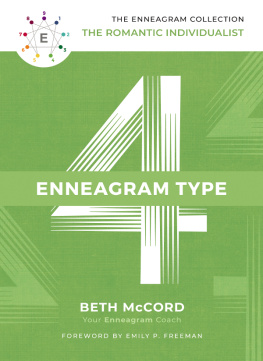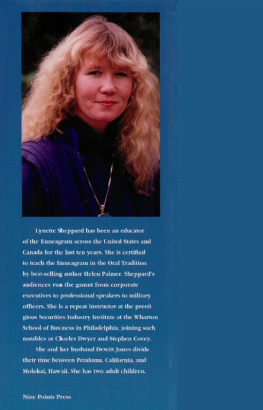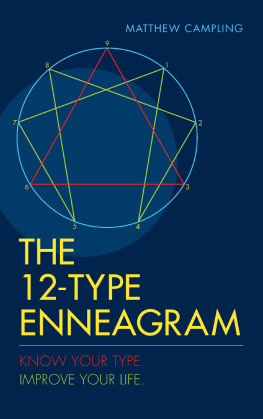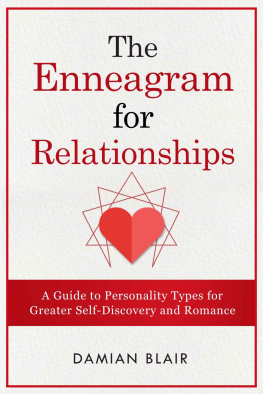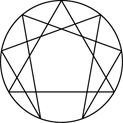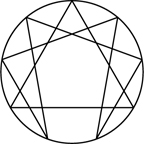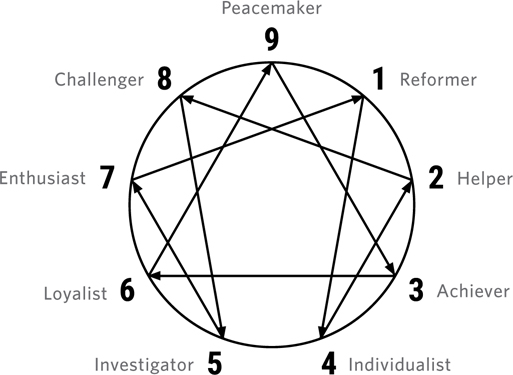Contents
Guide
The Complete Guide to the
ENNEAGRAM
A Modern Approach to Self-Discovery
and Connecting Well with Others
Sierra Mackenzie
Founder of Enneagram Enthusiast

The author and publisher have provided this e-book to you for your personal use only. You may not make this e-book publicly available in any way. Copyright infringement is against the law. If you believe the copy of this e-book you are reading infringes on the authors copyright, please notify the publisher at: http://us.macmillanusa.com/piracy.
To Mum, for sitting down to read my
unoriginal short stories as a four-year-old
and saying, Hey, youre a great writer.
The fact that you were biased remains
quietly sunk in the back of my head, but
those words of encouragement were all that
I needed to continue. To the moon
and back.
Also to those who think my stories and
examples are about you but the names are
differentthey probably are.
Before we were jaded adults, young adults, teenagers, or tweens, we were children. The ages from birth to four are what we call our formative years for a reasontheyre when we develop; create our core memories; and, one could argue, when we first develop our personalities (and identifiable Enneagram numbers).
Why do we do the things we do? Respond the way we do? Act the way we do? Of course, we innately know theres a reason, even if we dont necessarily want to take the time (or have the time to take) to discover and unravel those reasons.
Without sexualizing this, what does it mean to realize and know yourself naked? If you go to a museum that specializes in paintings from the Renaissance period, there are paintings in which nakedness is equated to being fearful, easily damaged, and vulnerable. We also look at nudes and judge them based on standards of beauty and health. When visiting the Louvre in Paris, my sister and I made a point to see the famous sculpture Psyche Revived by Cupids Kiss and noticed three types of passersby. As a powerfully tangible example of vulnerability on complete display, there were those who sat and looked at it for its incredible beauty and as the art that it was created to be, and then there were those who passed by almost awkwardly, looking as if
they had interrupted an intimate moment. Finally, there were a few that looked at the sculpture with disgust, seeing something degrading instead of the original beauty. Unmasked, vulnerable, in a position for others to judgewhich one are you? The judger? The observer of those judgments or of the sculptor themself? Or the appreciator of the sculpture for its beauty?
How we see things traces back to our first four years, which is when we learn about four simple-on-the-surface, four-letter words: home, love, work, and play.
Take a moment and think back. What was your home life like growing up? Do you associate it with feelings of warmth, consistency, and comfort? Or do you have feelings of uncertainty, strife, and internal striving? Or is it somewhere in the middle, where life was great as you recall it, but there was some disconnect with a parent, or you remember sleeping uneasily for a few months? Thinking back myself, I dont recall that much. But the things I do recall are the core memories that make up my childhood and why I am a 9w8 (Nine Wing Eight)a Peacemaker with a foot in the door of a Challenger. Its complicated, but to be personally vulnerable out of the gate, a lot of my childhood was spent feeling the need to be a mediator with a strong sense of justice that would come out and yell when it wanted to. Its traceable. And its slightly terrifying when you realize that the choices you make now reflect back on those times when you werent half as equipped to understand or make a decision as you are now. This is not a way to place blame, but an added interior complexity that helps make up your reactors.
How about your relationships? Intimacy and how we define love start in the home. As you grow older, your capacity to love stems from your family tree as well. Love is a word we tend to throw around in English. (Get me started on a deep coversation and youll hear me at least once declare my utmost irritation with people who say, I love you, and I love macaroni and cheese, with the same quickness. Have I just been loved on the same level of mac n cheese? Were about as different as night and day. I digress.) We also tend not to understand the roots and definition of the word love. How we love someone else can greatly differ from the way they choose or even understand how to love us. Our definitions of love can be completely different based on how we receive and give love, and how we were taught to love ourselves as children. Were we proud of what we accomplished? Were we impressed by ourselves because we just were?
At work and in play, we form relationships based on how we view authority and peers again, based on formative years. How did we view our parents or guardians? Did we respect them? Push their boundaries? In school, were we always trying to stick out as Hermione Granger 2.0 (perfectionist), teachers pet (needing approval), or class clowning our way around, or were we trying to fit in with the rest of the class?
So, here we are, trying to find our own place in the midst of a world that is struggling with sickness and misunderstanding, evolving with diversity and language and cultural nuances, learning how to function anew every day. With each of us having a different motivator and working alongside others who function differently, learning how to properly understand each other is crucial.
This is where the Enneagram comes into play. Taken at face value, the Enneagram is made up of nine numbers representing different personalities interconnected and woven together through human psychology and more traditional knowledge of human nature. However, in recent years, the Enneagram has become instrumental in the modern world. From businesses and group utilization in team building, to relationships and self-help and identification, to understanding and healing.
At its most basic, the Enneagram is a useful tool to help individuals manage their emotions and interpret the world as their most whole selves. In conflict resolution, leadership styles, emotional and intellectual intelligence, loving tendencies, family lifepsychology sits at the heart of it all, and learning to understand oneself has never been so necessary than in times like these.
Before we continue, have a look at the nine types, and start thinking about which one makes sense for you. Surface-level descriptions of these types arent necessarily exactly what they sound like, and the motivation of each type makes all the difference in the world, but the titles are there for a reason and may have some impact or steer you in the right direction as to your own type.

